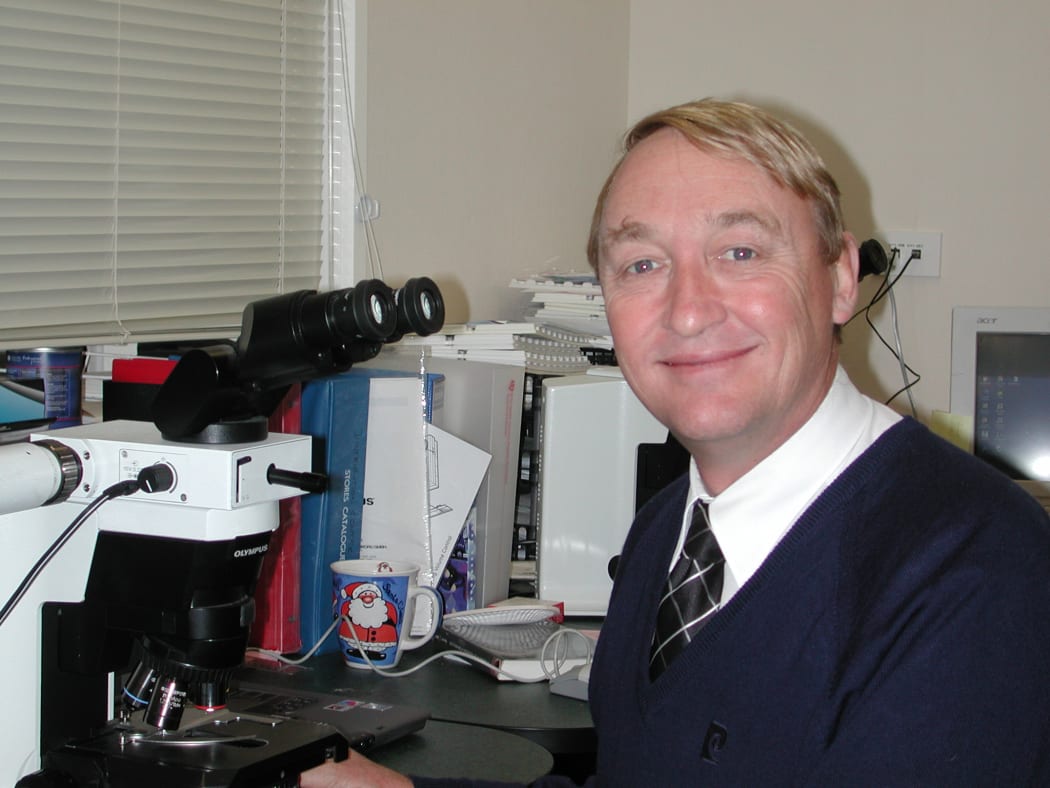
Dr Cynric Temple-Camp Photo: supplied
Always expect the unexpected from the dead, says Palmerston North pathologist Dr Cynric Temple-Camp.
In the new book The Cause of Death: True Stories of Death and Murder from a New Zealand Pathologist, Temple-Camp tells interesting tales from his 30-year career, which includes attending Mark Lundy's Privy Council hearing.
Usually, pathologists don’t talk to or meet the families of patients, so getting clearance from them to write about their loved ones’ deaths was a challenge both professionally and emotionally, Temple-Camp says.
But meeting the families turned out to be one of the best things about writing the book.
Some of the deaths he wanted to write about date back 30 years, and many people were shocked to hear from him, he says.
“So many of them said ‘We never knew the story, and thank you for telling us the story and thank you for looking after my loved one… and telling their story, letting them speak.”
The mysterious discovery of the naked body of a woman against a fence near an airport control tower is one of the cases in Temple-Camp's book.
It seemed she’d been severely beaten, and Temple-Camp initially told the police that the man responsible was a psychopath who would likely kill again.
The police then interrogated the woman’s husband for three days, before the true cause of her death emerged – mauling by a bull.
“This lady kept cows. She had a bull that she’d raised herself – I think it was a cross Ayrshire Friesian bull. This bull was known to be quite antagonistic to people. And it had jumped the fence and caught her.”
The woman had had a theory that if you were being attacked by a bull you could distract them by throwing a piece of clothing to the ground and making a getaway.
“This is what she’d done, and her clothes were strewn right across the paddock – but the bull caught her at the fence.”
The baffling case of a recluse found lying on his bed with what appeared to be a bullet wound between his eyes also features in the book.
When Temple-Camp looked through a magnifying glass at what would have been the bullet's entry point he could see bone intact underneath and little teeth marks around the edge of the wound.
The man had lived in the same house all of his life amidst serious squalor, he says.
“Every bit of rubbish he had was just thrown around him, every tin of food he’d eaten, the empty can was thrown to one side, and the house was just full of trash… And all through the trash you could hear the rats moving and heaving, rattling the cans. And it was quite clear what had happened here – this man had died, as it turned out, from a heart attack, lying on his bed and the rat had come and eaten the hole between his eyes. It just mimicked a bullet wound completely.”
Once, Temple-Camp saw a case of death by spontaneous combustion.
A man was discovered burnt to death in his car without any damage to the inside of the car other than smoke damage – it was later discovered that he had drunk a bottle of spirits then passed out while smoking a cigarette.
Spontaneous combustion usually occurs when a heavily intoxicated person smokes a cigarette or comes into contact with some other heat source, he says.
“Their clothing starts to smoulder and it melts the fat underneath. And the clothing then sinks into the fat like a candle wick, and they burn like a candle. In the same way, you can put a candle in the middle of your house and it will not set fire to the house, the heat is all concentrated… This leads to the whole body being burnt away.”
Every time a pathologist or mortuary assistant works on a sudden death, it takes a "little debit against their emotional energy" and burnouts in the industry are par for the course, says Temple-Camp.
“I don’t believe anybody is immune to this sort of sorrow.”
Temple-Camp is donating royalties from his book to the Palmerston North Rescue Helicopter as a way of honouring both the living and the dead.
“The helicopter takes off from right outside my office so I watch it all the time. Of course, they’re out there picking up the living – hopefully, most of the time – but occasionally they bring in the patients that I have to look after… Another reason is these stories really belong to the dead. They’re not really my stories, I’ve just been privileged to be part of the story and their advocate.”

